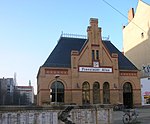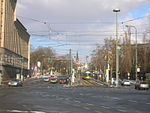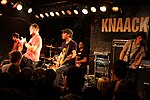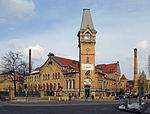Prenzlauer Berg

Prenzlauer Berg (German pronunciation: [ˌpʁɛnt͡slaʊ̯ɐ ˈbɛʁk] (listen)) is a locality of Berlin, forming the southerly and most urban district of the borough of Pankow. From its founding in 1920 until 2001, Prenzlauer Berg was a district of Berlin in its own right. However, that year it was incorporated (along with the borough of Weißensee) into the greater district of Pankow. From the 1960s onward, Prenzlauer Berg was associated with proponents of East Germany's diverse counterculture including Christian activists, bohemians, state-independent artists, and the gay community. It was an important site for the peaceful revolution that brought down the Berlin Wall in 1989. In the 1990s the borough was also home to a vibrant squatting scene. It has since experienced rapid gentrification.
Excerpt from the Wikipedia article Prenzlauer Berg (License: CC BY-SA 3.0, Authors, Images).Prenzlauer Berg
Prenzlauer Allee, Berlin Prenzlauer Berg
Geographical coordinates (GPS) Address Nearby Places Show on map
Geographical coordinates (GPS)
| Latitude | Longitude |
|---|---|
| N 52.539166666667 ° | E 13.424166666667 ° |
Address
Prenzlauer Allee
Prenzlauer Allee
10405 Berlin, Prenzlauer Berg
Germany
Open on Google Maps











